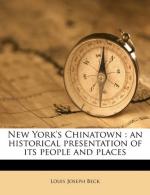|
This section contains 2,202 words (approx. 8 pages at 300 words per page) |

|
Rice. During the Tang dynasty (618-907) millet was the staple food in northern China, while a variety of rices became popular in the south. The introduction of doublecropping (planting twice a year) of rice in southern regions was the most significant change in Chinese food and agriculture. Thereafter, people had sufficient food to support themselves, which encouraged immigrants to settle in these newly secured lands. Although some Chinese had moved south since the Han dynasty (206 B.C.E.-220 C.E.), the region did not experience large-scale settlement until the Tang dynasty. For this reason, unlike northerners who called themselves the Han, the Cantonese in the South spoke of themselves as people of Tang. In the deep South, the regional diet was based on rice and tubers. Yams and taro, regarded as uncivilized food, became major staples for the local people, while...
|
This section contains 2,202 words (approx. 8 pages at 300 words per page) |

|




